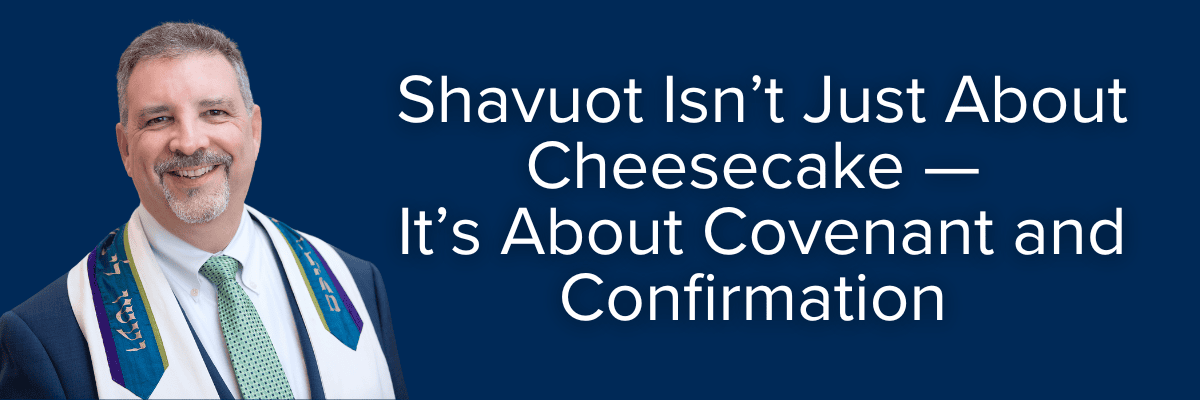If I asked you to name the three most important holidays in Judaism after the High Holy Days, you might list Passover, Sukkot, and Chanukah. You would be two for three! Chanukah is a minor festival and not even in the Torah. This weekend (Sunday evening) we celebrate one of the major festivals in the Jewish calendar, though it’s also one of the least known and least observed by modern Jews: Shavuot. The Torah ranks the holidays (besides Shabbat) starting with the High Holy Days (Rosh Hashanah and Yom Kippur) as the most important of all holy days. Then there are the three major festivals (Shelosh Regalim). They are also called the Pilgrimage Festivals as Jews made a pilgrimage to the Temple in Jerusalem to bring their offerings to the Priests. These three biblical festivals are Pesach, Sukkot, and Shavuot. Most Jews know what to do on Pesach (have a Seder, don’t eat Chameitz, etc…) and on Sukkot (build a Sukkah, start the Torah reading over again at the end of the holiday, which is called Simchat Torah). But what about Shavuot? And why is Confirmation on Shavuot, as it is for us on Sunday evening?
Each of the three festivals has both agricultural and historical significance. Agriculturally, Pesach begins the spring harvest. Seven weeks later Shavuot is when the first fruits of the harvest were brought to the Temple and Sukkot is tied to the fall harvest. Historically, Pesach celebrates the redemption from slavery. Shavuot celebrates the receiving of the 10-commandments on Mt. Sinai. Sukkot represents the 40-year wandering period when the Israelites lived in temporary shelters or booths in the desert, after they received the commandments.
Shavuot is not sexy and not necessarily fun unless you like cheesecake! Pesach is fun, celebrated at home around the table with your family and friends. On Sukkot we build and decorate and then dance! But Shavuot is our study holiday. It’s a time of learning as the holiday focuses on revelation. Jews traditionally stay up all night studying Torah and eat dairy foods, which rules me out as a Vegan and being lactose intolerant! Tradition points to several reasons that this is the holiday of dairy. First, it is said that the Torah was given to Moses on Shabbat. No cattle could be slaughtered on the Sabbath, and so those Jews could only eat dairy. Another reason is that God says in Exodus 3:8 “I have come down to rescue [the Israelites] from the Egyptians and to bring them out of that land…a land flowing with milk and honey…” You may find other reasons that Jews eat dairy on Shavuot. There are lots!
German Reform Jews introduced the idea of a group ceremony in the 19th century that emphasized religious school learning and Jewish values rather than traditional rituals alone. They called this Confirmation, and it was designed to replace Bar Mitzvah. Reform Jews believed a 13-year-old was too young to be considered an adult in Jewish law and created this ceremony to encourage young men and women to stay in religious school until the age of 16, a time of greater maturity. However, in many American Reform congregations, Confirmation was in addition to Bar Mitzvah but didn’t replace it. Confirmation was held on Shavuot because it aligns with the receiving of the Torah. These 16-year-olds had committed themselves to Jewish learning and now they were confirming that. Confirmation symbolizes accepting the Torah for oneself, just like the Israelites did on Mt. Sinai, which is what is celebrated on Shavuot. The Torah portion that we read on Shavuot is, in fact, the 10-commandments.
And so, on Sunday night at 6:30, we celebrate with 19 of our congregation’s young people as they lead us in prayer, chant from the Torah, and teach us how Jewish learning has impacted their lives. Come, support these young people, and let them know that the TRS community salutes and values those who commit themselves to Jewish learning.
Shabbat Shalom and Chag Sameach!
Cantor Michael Shochet


